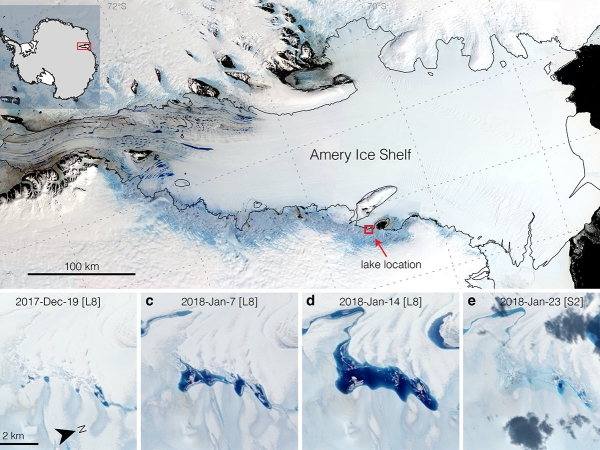The lakes that form on Antarctica’s ice shelves can drive vertical cracks deep within the ice, increasing the chance of ice shelf collapse and sea level rise. However, if meltwater accumulates in certain areas and drains fast enough, it may temporarily stabilize the ice shelf despite increased warming, according to researchers.
“Antarctica’s ice is the largest potential source of sea level rise,” said Luke Trusel, assistant professor of geography at Penn State. “A significant percentage of the global population lives along the coastline in many of the world’s largest cities. We need to understand what is happening to ice shelves to make reliable sea level predictions. Water can destabilize ice shelves, so we need to know where the water is and what it’s doing.”
Trusel and his colleagues used satellite data to study a meltwater lake that forms annually at the grounding line of the Amery Ice Shelf in East Antarctica. The grounding line is a zone where land ice transitions to a floating ice shelf that prevents the land ice from flowing into the ocean and raising sea levels. The ice in this area tends to dip and form a basin that could collect water.
Continue reading at Pennsylvania State University
Image via Pennsylvania State University


